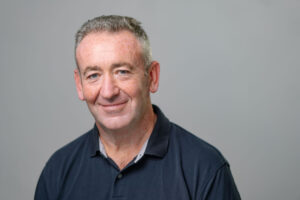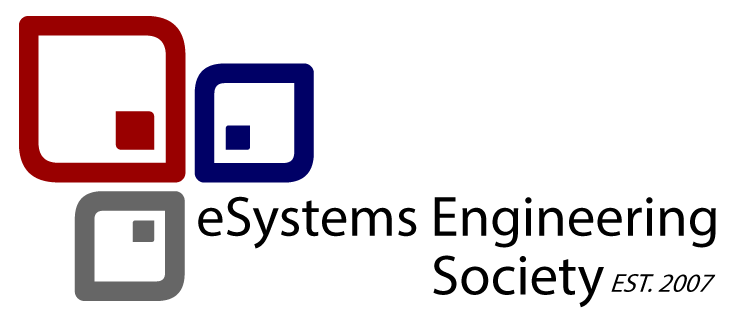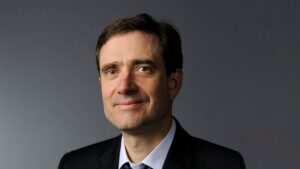Content to be Updated.
Autonomous Machine Learning: developing neural network models with quantum-inspired evolutionary algorithm
Professor Marley Vellasco
Vice-Rector and Professor of AI
at the Pontifical Catholic University of Rio de Janeiro (PUC-Rio), Brazil
Professor Marley Vellasco is a Full Professor and Vice-Rector at the Pontifical Catholic University of Rio de Janeiro (PUC-Rio). Marley holds a degree in Electrical Engineering/Electronics from PUC-Rio (1984), a Master’s in Electrical Engineering from PUC-Rio (1987) and a PhD in Computer Science from University College London (UCL) (1992). She has published over 90 papers in specialized journals and more than 400 in conference proceedings. Dr Vellasco has also published 19 book chapters and five scientific books. She supervised more than 90 master’s dissertations and 40 doctoral theses. She is a member of the Editorial Board of the main journals in Computational Intelligence, such as Neural Networks, IEEE Transactions on Neural Networks and Learning Systems, IEEE Transactions on Fuzzy Systems and IEEE Transactions on Artificial Intelligence. She is the current Vice-President for Conferences of the Computational Intelligence Society (CIS) of IEEE and the Secretary of the International Neural Network Society. She has experience in the areas of Electrical Engineering and Computer Science, with an emphasis on Computational Intelligence, working mainly on the following topics: neural networks, fuzzy logic and evolutionary computing, focusing on the development of intelligent hybrid systems for AutoML (Automatic Machine Learning), such as neuro-evolutionary, fuzzy-evolutionary models and neural architecture search (NAS).
Abstract:
The area of autonomous machine learning (AutoML) aims to develop decision support systems automatically. The goal is to make machine learning accessible to other scientists who want to apply these techniques to their domains. The area ofneuro-evolutionary models or, more recently, Neural Architecture Search (NAS) can be seen as a sub-area of AutoML and is an essential step towards automating the development of neural network architectures. This talk presents an overview of quantum-inspired evolutionary models and their application in the automatic evolution of different models of artificial neural networks, from simple (shallow) Multi-Layer Perceptrons and Recurrent Neural Networks to more complex deep Convolutional Neural Networks. Applications in control, system identification, image classification and time series forecasting will be presented.
Leveraging Remote Sensing and AI for Comprehensive Urban and Environmental Management in Dubai
Professor Hussain Al-Ahmad
Vice President of Academic Affairs at University of Dubai (UAE), Chair of the IEEE UAE Section.
Professor Hussain Al-Ahmad is the Vice President of Academic Affairs at University of Dubai, UAE and the Chair of the IEEE UAE Section.
His research interests are in the areas of artificial intelligence, remote sensing, image processing, propagation and engineering education. He is the Principal Investigator at University of Dubai MBRSC Lab for Remote Sensing. He received his PhD from the University of Leeds, UK in 1984. He has 40 years of higher education experience working at academic institutions in different countries including University of Portsmouth, UK, Leeds Beckett University, UK, Faculty of Technological Studies, Kuwait, University of Bradford, UK, Etisalat University College, Khalifa University and University of Dubai, UAE. He was the founding Dean of Engineering and IT at the University of Dubai, UAE. He was the founder and Chair of the Electronic Engineering department at both Khalifa University and Etisalat University College. He has supervised successfully 32 PhD and Master students in the UK and UAE. He has delivered short courses and seminars in Europe, Middle East and Korea. He has published over 150 papers in international conferences and journals. He has UK and US patents. He served as chairman and member of the technical program committees of many international conferences such as, ICSPIS 2018-2024, IEEE ICECS 2003-2008, 2013&2021, IEEE ICIP 2020&2024, BCS ICT 2016, IEEE EDUCON 2016&2019, IEEE ISSPIT 2009&2015, BCS IITC 2013-2014, GEF 2013-2014, ICTIST 2011, DeSE 2011, CTIT 2011, IEEE GCC 2011, CTIT 2009, AICCS 2009, WOSPA 2008, IEEE ICPSPC 2007, AICCS 2007, ISSPA 2007, MESM 2004, SIP 1997-2001, ISDPS 1996-1997 and GSDSP 1990. He is a Life Senior Member of the IEEE, a Fellow of the Institution of Engineering and Technology (FIET), Chartered Engineer (C.Eng) and UAE CAA Certified Reviewer. He was the Vice Chairman of the IEEE UAE section and Chairman of the IEEE UAE Education and Computer Chapters. He is a founder member of the IEEE UAE Computer, Signal Processing and Communication Chapters.
Abstract:
The MBRSC Lab at the University of Dubai has extensively utilized remote sensing technologies and AI across multiple projects to enhance urban planning, agricultural monitoring, archaeological exploration, environmental monitoring, and infrastructure development. One significant project involves automating the detection and counting of palm trees, crucial to the UAE’s agricultural heritage, using UAV imagery. This method, employing the Normalized Difference Vegetation Index and Circular Hough Transform, improves mapping accuracy and efficiency over traditional manual methods. Another initiative focuses on developing an autonomous tool for extracting features from high-resolution Dubai Sat images, which assists government entities by providing essential data on water bodies, vegetation, roads, buildings, and undeveloped areas in a format compatible with ArcGIS. In the realm of archaeology, remote sensing with Synthetic Aperture Radar images has facilitated the pre-screening of potential archaeological sites in the desert region of Dubai, aiding future excavation plans. Urban growth in Dubai has been analyzed using multi-temporal Landsat images, providing insights into land use changes and supporting the city’s smart development strategies. Additionally, a Polarized Aerosol Retrieval Algorithm was created to estimate and describe the distribution of atmospheric aerosols, validated against ground-based measurements, contributing to climate and air quality studies. Furthermore, Neural Networks algorithms have been employed for the semantic segmentation and extraction of roads from high-resolution satellite images, enhancing the accuracy of transportation mapping and city planning. The effect of rising sea levels due to climate change on Dubai was investigated, and different scenarios to mitigate the effect were considered. Finally, various super-resolution signal processing algorithms were developed to improve the accuracy of remote sensing images. Collectively, these projects showcase Dubai’s commitment to leveraging cutting-edge remote sensing technology utilizing AI for comprehensive and efficient management of its urban and natural resources.
Professor Brendan Godley
Centre for Ecology and Conservation, Environment and Sustainability Institute, Penryn Campus, University of Exeter, UK. College of Marine Science and Aquatic Biology, University of Khorfakkan. Khorfakkan, Sharjah, United Arab Emirates
Professor Brendan Godley is a Scottish conservation scientist with wide ranging interests in biodiversity conservation. He is the Marine Strategy Lead for the University of Exeter (UK) and is Honorary Professor at the University of Khorfakkan.  His research (Google Scholar: >300 papers and >30 000 citations) has largely focussed on the study of marine vertebrates (turtles, mammals, birds) and he has always been an early adopter of novel technology such as satellite tracking to understand animal movements. In the last few years, he has spent ever more efforts on interdisciplinary approaches to conservation research, including focussing on the impact of plastics in our oceans, methods to mitigate bycatch in fisheries, and the design of marine protected areas. This work is undertaken in a highly collaborative way with academic, government and non-governmental organisations and industrial partners in the UK and overseas. He takes these approaches into his educational work focusing particularly on fostering employability skills and opportunities for undergraduates and masters students to interact with a wide range of stakeholders whilst working on real world problems and solutions.
His research (Google Scholar: >300 papers and >30 000 citations) has largely focussed on the study of marine vertebrates (turtles, mammals, birds) and he has always been an early adopter of novel technology such as satellite tracking to understand animal movements. In the last few years, he has spent ever more efforts on interdisciplinary approaches to conservation research, including focussing on the impact of plastics in our oceans, methods to mitigate bycatch in fisheries, and the design of marine protected areas. This work is undertaken in a highly collaborative way with academic, government and non-governmental organisations and industrial partners in the UK and overseas. He takes these approaches into his educational work focusing particularly on fostering employability skills and opportunities for undergraduates and masters students to interact with a wide range of stakeholders whilst working on real world problems and solutions.
Abstract:
We live on a blue planet and all depend deeply on our ocean. Marine ecosystems and species are negatively impacted by overfishing, habitat destruction, pollution, climate change, and invasive species. Large marine vertebrates (eg sea turtles, seabirds, marine mammals) have particularly suffered in the past although active conservation, augmented by technological development, has helped promote recovery in some species. I outline some of the findings of my own work using technology in marine conservation and highlight the pressing future needs, as I see them. This I augment with a series of engineering asks generated by my close colleagues working on marine conservation. I make the case for greater efforts to bring together individuals from the conservation/engineering/fisheries sectors to diagnose key problems and to develop potential technological solutions. I also highlight how, despite being vital, this is an area that can be challenging to monetize in the short term. It is, however, an endeavour where philanthropic funding can vitally support technological innovation that results in profound conservation impacts that may also become self-financing, in time.
Professor Rolf Mueller
Lynn Professor of Mechanical Engineering, Virginia Tech, Blacksburg, Virginia, USA
Professor Rolf Mueller is a Professor at the Raymond E. & Shirley B. Lynn Professor of Mechanical Engineering, and the director of the BIST Center, Virginia Tech, USA.
Abstract:
Sensing of underwater environments relies to a large extent on sonar. This is unlikely to change since water is a much better medium for the propagation of acoustic waves than it is for electromagnetic waves. However, the acoustic wavelengths employed by sonar are orders of magnitude larger than those of visible light which makes the formation of images of the environment with sonar much harder than would be the case with visible light. Nevertheless, state-of-the-art sonar technology treats sonar as a “poor man’s vision” and tries to recreate image representations of the underwater environments despite the unfavorable wavelength regime. Typically, this requires arrays of a large size combined with multi-channel signal processing. These technologies are hence a poor match for small autonomous platforms where size, electrical and computational power, as well a cost are subject to severe restrictions. However, there are biological model systems for miniature sonars that require only two channels and a minimal signal processing effort to enable dexterous navigation in complex natural environments: Most prominent among them are the more than 1,000 species of bats that rely on their biosonar systems to sense their environments – despite having sonar apertures that are just a couple of wavelengths across and brains that have much fewer synapses than trainable parameters in current deep neural networks. Biomimetic reproductions of bat biosonar combined with detailed observations of the biosonar systems in freely behaving bats hence allow to explore alternative paradigms for sonar sensing on small autonomous marine platforms.




